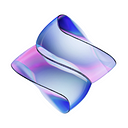SEDA is the first of its kind ‘Modular Data Layer’ launching Q1 2024
The modular design narrative has taken Web3 by storm. SEDA is leading the Web3 data industry, launching the first-ever modular data layer. While Web3 narratives naturally run rampant, it’s important to understand what is a modular data layer and why they are important.
What Is A Modular Data Layer?
To understand what a modular data layer is, let’s first break it down into two main features — data layers and modularity.
What is a data layer?
The Housing Analogy
To understand the advancement from Oracle to Data Layer, imagine a new housing settlement where each house represents a blockchain. Outside the housing development (Blockchain environment) are multiple large water reservoirs (Off-chain data). For each house (blockchain) to function correctly, it needs access to the water (off-chain data). To enable access to the water (data), water companies began building direct canals from individual reservoirs (data) to each house (blockchain) they felt met their criteria warranting a connection (Data Gate-keeping).
The Housing Data Crisis
Houses are now faced with numerous challenges due to the high demand for water (data) in each house. Firstly, they have to wait months before they can get a canal connected due to the time needed to approve (whitelist projects) a canal integration plus the time needed to create that new canal (deploy data feeds). Some houses cannot access water, while others face immense delays due to transfer bottlenecks via an overly complex canal network (Individually deployed Oracle contracts and insecure bridge networks).
SEDA: A Universal Solution
Introducing SEDA, the river company. In this analogy, SEDA has built a free-flowing river that allows the water (off-chain data) in the reservoir to flow freely throughout the housing development, providing each house (blockchain) with the plumbing (SEDA SDK) to plug into the river directly when and as they need. Now, the water (off-chain data) can flow freely between any house (blockchain) without prior approval from the water company.
Therefore, a data layer is a universally accessible means of transport for any blockchain to access, transport, and query data from any source.
What does modular mean in blockchain?
Now you know what a data layer is, let’s look at what modular means to a blockchain layer. Think of a modular blockchain like Lego pieces, where multiple pieces (modular blockchains) are connected to create a final structure. Each Lego piece is designed to complete a specific function within the overall structure. Traditional blockchains were built to complete all transaction stages from execution to data retrieval, consensus, and finally, settlement. Modular blockchains, like the Lego piece, are built to serve only one of the transaction stages, allowing developers to mix and match blockchains (Lego pieces) to suit their desired functionality. This allows for ‘horizontal scalability,’ meaning an infinite amount of blockchains can ‘plug-n-play’ by mixing and matching modular blockchains for different functions.
So, What Is A Modular Data Layer?
A Modular Data Layer means that SEDA’s data layer is non-app specific and can be used by developers in an infinite amount of modular stacks (a combination of modular blockchains). Representing a comprehensive data access, transport, and configuration solution, SEDA will be used by developers as their dedicated data layer. The result is an incredibly flexible, scalable, and programmable data superhighway (The River) that is usable by anyone in Web3.
